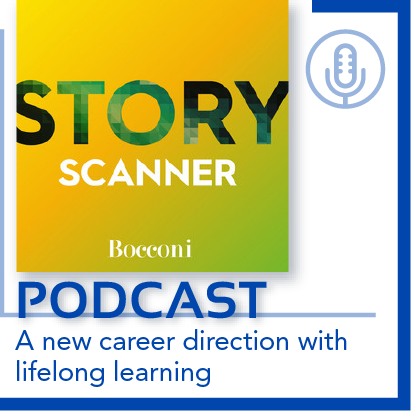
New Directions
Can it be accidental that formazione (training) is mentioned 206 times in the PNRR, Italy's National Recovery and Resilience Plan? Twice more than occurrences of the term "GDP", thrice more than "growth", five times more than "public administration", and much more frequently than "firms". Furthermore, in a crucial passage of the plan relating to employment policies for the coming years (PNRR, p. 212), three strategic objectives are indicated: 1) Increase the employment rate, by facilitating job transitions and providing people with adequate training; 2) Reduce the skills mismatch; 3) Increase the quantity and quality of training programs for young people and the unemployed, in a context of investment also in the continuous education of the employed.
None of this is by happenstance, because attention to human capital and its growth requires extraordinary investments in the training, upgrading and adaptation of people's skills (upskilling), as well as the development of new ones (reskilling). As Next Generation EU and the PNRR clearly indicate, the recovery from the collapse of the economy engendered by the pandemic responds to the trend, which emerged well before COVID, towards the development of skills as crucial factors for social transformation. Already in January 2017, well before the onset of the COVID hurricane, a prophetic issue of The Economist indicated lifelong learning as the new "economic imperative", an obligatory path for economies and generations that are going to live and work in the era of automation and artificial intelligence. The intertwining of pressures for post-pandemic economic growth and the technological revolution amplifies the need for an accelerated reconversion of the human capital employed, both in companies and public administrations. It is a process that will extend over time, since the speed and depth of the variations in competences and skills imposed by sectoral transformations require continuous adaptation from which no one in the workforce is exempted, both at operative and decision-making levels.


In industrialized nations, for many years the idea was prevalent according to which schooling and higher education represented a sort of initial propelling thrust capable of feeding a person's professional life cycle indefinitely. According to this logic, the larger the investment in education warranted by prestigious, and therefore expensive, institutions, the stronger and more lasting would the booster effect be to one person's own career and his/her ability to occupy positions of responsibility over time and, consequently, the higher would be the return on investment in education in the early stages of the career. Once the foundations had been established through robust university education and, possibly, in the first years of work, the other skills necessary for professional career growth would come from experience in the field, or at most, from training activities that were not particularly intense and structured, distributed haphazardly throughout one's working life.
However, this approach could only be effective in a world of static and relatively stable skills over time, where skills and knowledge are treated as a stock of capital whose value is a function of the professional life cycle and, therefore, length of job tenure. In other words, the thrust provided by early training in higher education and job experience over time would feed a repository where professional skills and knowledge accumulated, providing people with tools and models consistent with the growth of responsibility, autonomy, and variety of tasks that the development of the career required.
On the other hand, the present-day context is one characterized by the profound and continuous transformation of skills. According to the World Economic Forum Future of Jobs Report 2020, approximately 85 million jobs could disappear by 2025, while 97 million new professional profiles are going to emerge, which are better suited to the new configuration of the division of labor between machines, algorithms and humans that is emerging. It is not only a radical transformation largely driven by technology that marks the new era, but also the generalized change in the model of skills and competences required by the vast majority of professions and sectors.


Consequently, in order to accompany people in this metamorphosis, in an effort that is perhaps unprecedented, training and investment in education must respond to two main characteristics: continuity over time and transformative value.
The continuity of investment in education throughout one's working life is a necessary condition in order to be able to cope with instability in skills, understood as the portion of new knowledge functional to performing a specific job, which characterizes many industries. For example, average skill instability across economic sectors such as agriculture, food & beverages, automotive, hi-tech manufacturing, consumer goods, ICT, energy, and financial services is estimated to be around 44% (WEF, 2020), with peaks of 55% in the case of the car industry. To this general shortening of the skills lifecycle, another trend is to be added, which is job hopping, namely the reduction of the average number of years spent in a given job or profession. This tendency toward impermanence has lost the traditional stigma that made job hopping an undesirable feature for a prospective employer.
While skill instability is the continuous modification of the technical requirements for a given job, job-hopping is a process of rapid movement between professions and positions. In both cases, there is a great dynamism that is changing the person-job-organization relation, in the form of increasing liquidity in the skills required to perform a specific job. All this requires continuous exposure to upskilling or reskilling processes to ensure that the rapid obsolescence of skills does not result in a systematic mismatch between individuals
and jobs, to the detriment, not only of the employability of individuals, but also overall productivity.
In this context, to employ an effective analogy, continuous training can play the function of "insurance policy" against the obsolescence of skills, imbuing individuals and organizations over time with a continuous flow of content and updates capable of ensuring the consistency between skills possessed by people and skills needed on the job. However, precisely from the point of view of continuing education, compared to all 27 EU countries, the Italian situation presents numerous critical points and delays. According to Eurostat data, in the pre-pandemic period (2016-third quarter 2019), Italy ranked 20th in as share of working population participating in education and training activities, well below France and Germany, and lower than the EU average. Not only that, it was also a snapshot of the current profile of Italian lifelong learning: much more focused on men than on women (Italy ranked last in the EU in this, in the company of Cyprus, Czech Republic and Hungary); 20% more focused on cohorts aged 25-34, than on 55-60 year-olds; much more concentrated (65.4%) on people with college education. Finally, only in 17% of cases, Italian continuing education is offered by certified and accredited university-based institutions, while most commonly (32.8% of cases) it is provided directly by the employer and is largely of an "informal" type. As it can be seen, the gap that Italy needs to fill is large and the problem is compounded by the generalized distrust and poor culture of investment in training on the part of small and medium-sized enterprises, especially those working for the domestic market.
The transformative element of continuing education is condensed in the ability to profoundly modify the "hard" components of skills, but also in the way it influences individual cultural and behavioral development. In this light, education becomes a regenerative force, a kind of palingenesis (παλιγγενεσία) which prompts radical renewal. Most investment in adult education arises from a need for professional regeneration, and this always entails a process, sometimes draining from a psychological point of view, of questioning one's own professional identity. What is observed, however, is that transformation-oriented training focuses on individuals that are capable of changing not only their own situation, but also the organizations they work for. These are people who are capable of challenging themselves to achieve a kind of professional regeneration that yields positive impacts across the entire organization, encouraging change, and stimulating the ability to deal effectively with current transformations in business models, technology and consumer behavior.